Tribalism is easy to trigger – and tricky to manage. Sometimes, it evolves into loyalty. On occasion, it burns out. And in the case of the most prominent Web3 communities, it pairs with the actual value of a project and constitutes a resilient shield.
In this piece, I’m exploring how tribalism forms, how it fractures, and how you can shape it so it grows into something indeed enduring. I illustrate with examples.
Belonging – the Web3ish stage before utility
I’ve always been drawn to Web3 culture — not because I’m its best representative (please call me a boomer degen 😁), but because it’s one of the richest environments for observing human behavior in motion. And I’ve tried, consistently, to make sense of it through a psychological lens.
When I first entered the crypto space back in 2017, it seemed obvious that financial speculation was the core driver. That was the moment Bitcoin entered the mainstream, and it looked as if a coalition of libertarians, anarchists, and opportunists had finally discovered the mythical economic free lunch. That illusion lasted until January 2018.
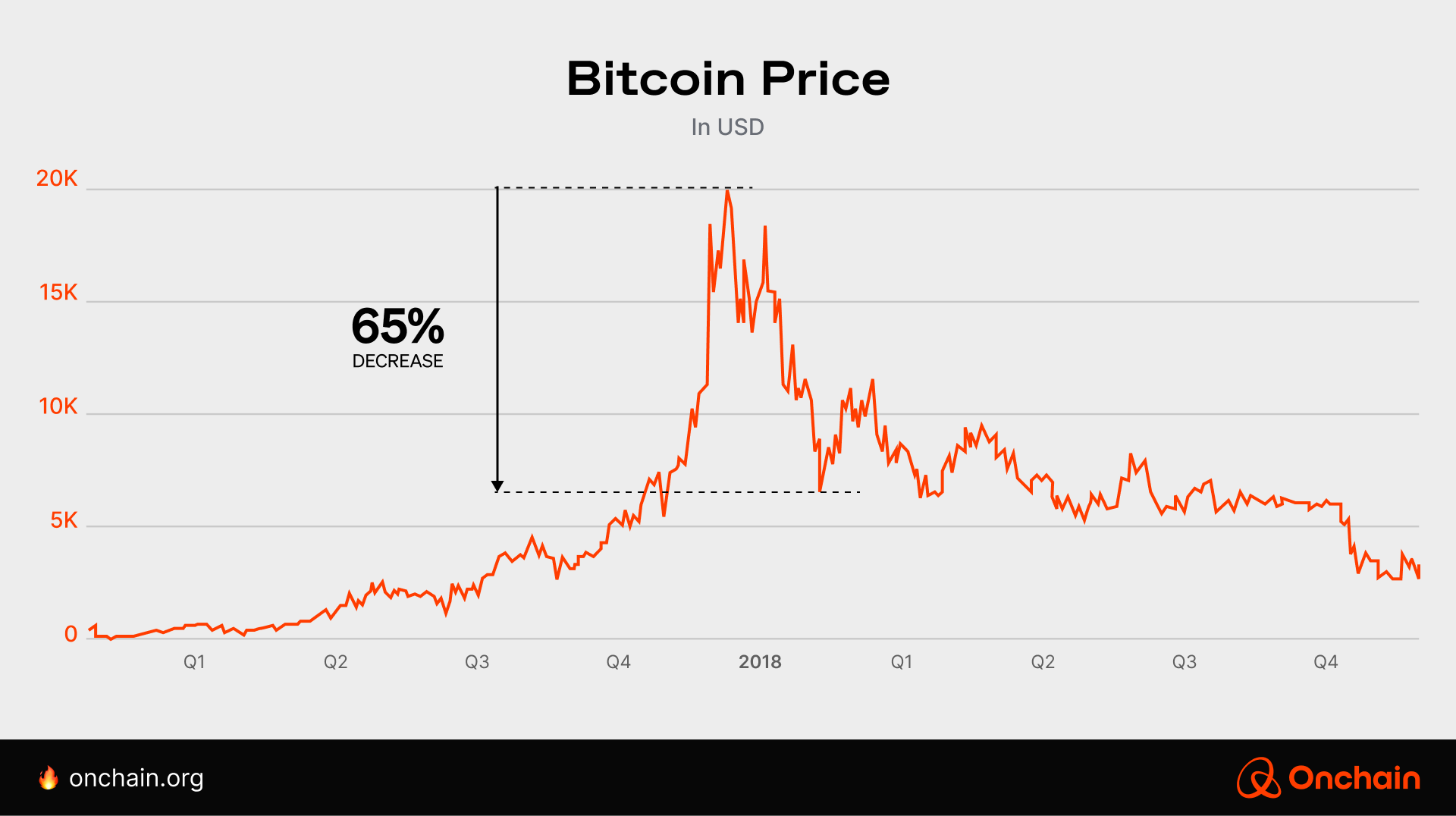
Then came 2020–2021 – and a different energy. Yes, people were still driven by price. But something else was happening, especially in the NFT space. Projects like Bored Ape Yacht Club weren’t just pumping because of market mechanics — their trajectories were tightly correlated with the strength of the social bonds between the project and its holders.
A Discord role. A PFP. A custom emoji under every tweet. These were more than artifacts — they were low-cost, high-signal markers of belonging. Not just to a project, but to a subculture. And at the extremes, to something that looked and felt like a digital cult.
That’s not romanticization. It’s not nostalgia. The truth is, the simplest working definition of a Web3 community is still something like “a group of online friends trying to make money together.” But many of these groups are shaped just as much by shared identity and outsider energy: the feeling of being different, underestimated, or misaligned with mainstream systems. After all, if it was only about financial return, we’d all be sitting quietly in Bitcoin longs, wouldn’t we?
Frameworks like McMillan & Chavis’ Sense of Community Model help explain what’s happening here. People don’t just join projects, they adopt group identities, build emotional connections through shared rituals, and engage in boundary-marking behaviors. These dynamics can emerge rapidly, especially in environments with high uncertainty and strong incentive alignment.
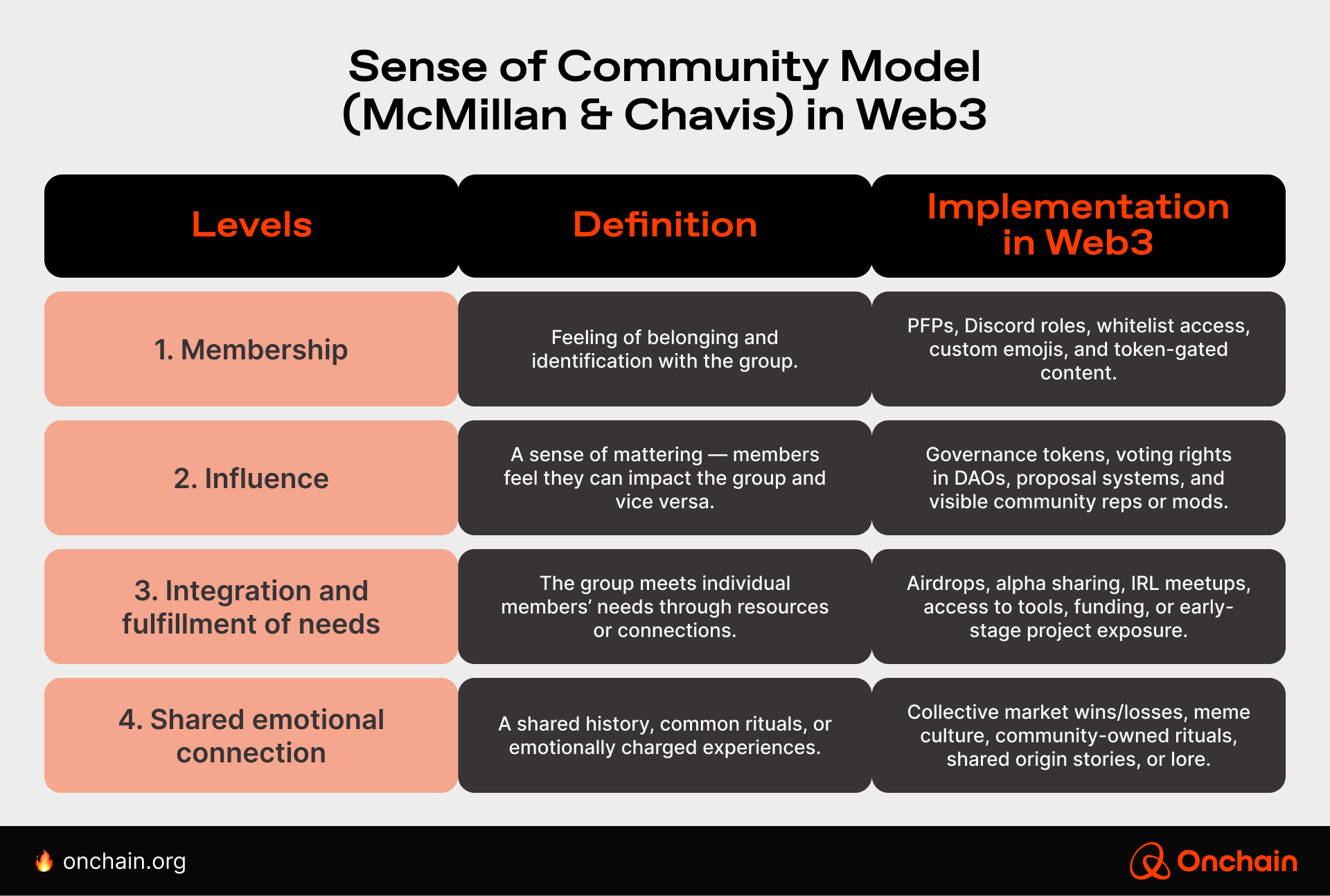
Tribalism and in-group favoritism in Web3 communities
The bond and sense of community isn’t created solely by rituals, DAO governance, or sharing wins and losses. Many Web3 communities are actually built around what they’re not.
Well, sometimes, one may have a feeling that the entire crypto culture follows this principle.
“We speak our own language.” “It’s something only we can understand thanks to being in trenches for so long.” “We share the same scars, so that some stuff is way more natural to us than for you.”
This “us vs. them” dynamic makes the roots of the crypto world and massively helps to solidify early identity of a community – often way before (or even instead?) any product-market fit. It may have started with Bitcoin maxis fighting everyone else, but now is visible in Ethereum vs. Solana wars. It was prominent in the Terra Luna case, and will likely glue many Web3 communities in the future.
The reason is very natural to every human being. A so-called in-group favoritism is one of the most popular cognitive biases that shapes our social connections and (mis)understanding of people from outside of our cult. It makes us favor and justify our own group’s behavior, while stereotyping the “other.”
In-group favoritism obviously helps build bonds, but also creates echo chambers and stifles dissent. In consequence, loyalty becomes less about performance, more about identity. However, for many “undeveloped” Web3 projects it’s exactly what they need to create at the onset.
It’s further explained by Social Identity Theory, which suggests that people derive part of their self-concept both from group membership and being different from the other ones.
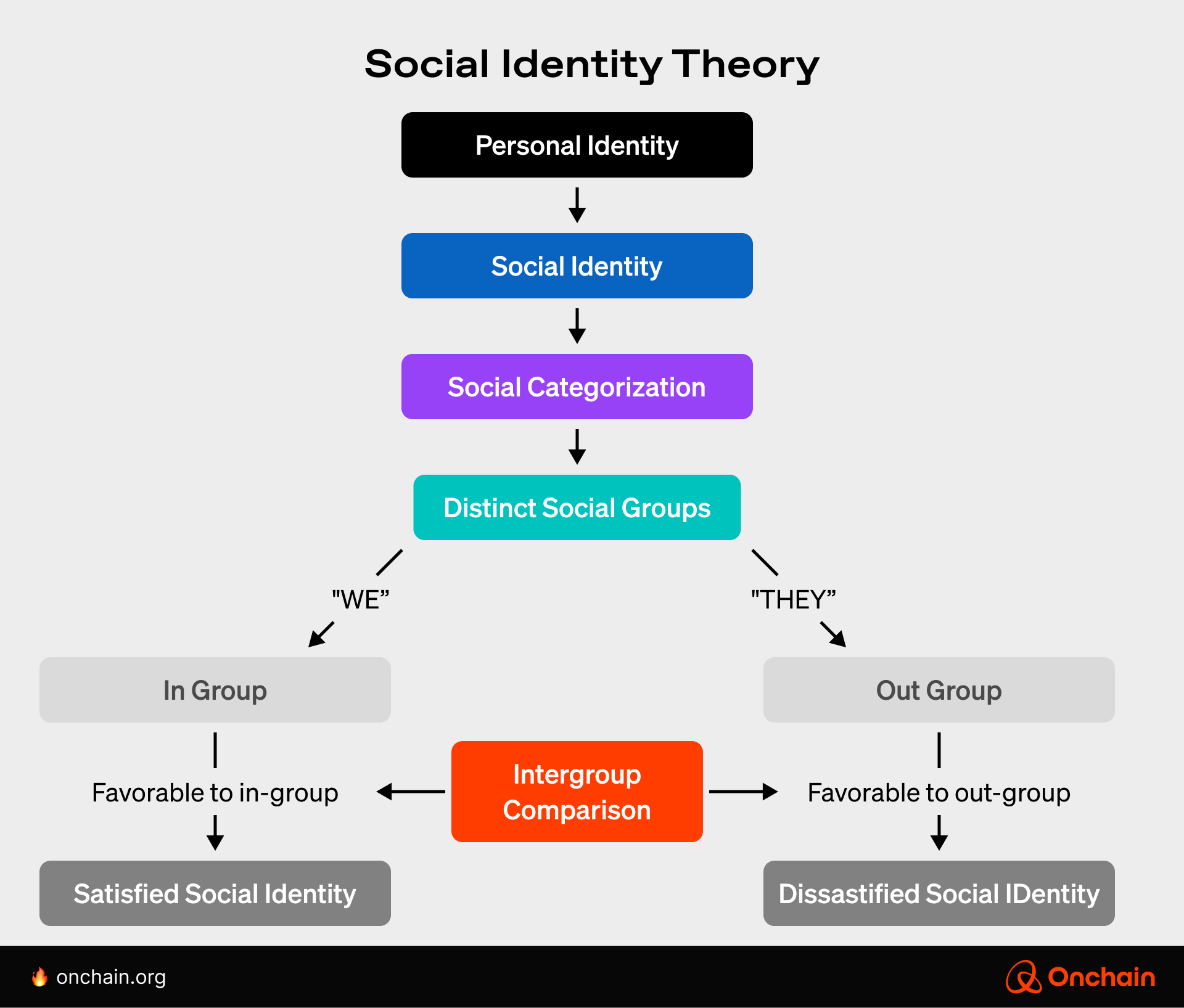
Web3 community: tribal or loyal?
However, this tribal energy usually starts to fade and becomes harder and harder to sustain. In such a scenario, projects face a critical turning point: Does the community evolve into something deeper? Or was it always just noise?
Based on recurring behavioral patterns, we can observe three distinct models of how Web3 communities play out over time:
- Communities that transition from tribalism into loyalty
- Communities that maintain both tribal energy and loyalty simultaneously
- Communities that never complete the shift — and collapse inward
Each follows its own psychological rhythm. Each comes with signals and consequences worth paying attention to.
Pattern one: from tribalism to loyalty
It’s the most natural and likely the most desired path. What starts as fast, emotional engagement becomes internalized identity – with consistency that lasts beyond price movements or market cycles.
How to recognize this shift?
- Community voice is focused on “who we are,” and not only on “how different we are.”
- Engagement is less tied to external events (price, rivals, hype) and more rooted in routines and shared progress of a project.
- Community stories become retrospective – people start referencing history and continuity, not just current momentum.
Why does it happen?
- Narrative bias: people naturally organize experiences into coherent stories – when a project’s story is engaging enough to become internalized, the loyalty strengthens.
- Social identity theory: people begin to see the community as part of their identity – not just an affiliation.
- Over time, the cost of leaving becomes psychological: abandoning the group feels like abandoning a version of yourself.
How to influence it?
- Shift the message from external focus to internal purpose: clarify what the community stands for.
- Preserve and deepen rituals that create cultural continuity.
- Create space for members to reflect on shared history and progress.
Examples:
- Ethereum – from a “Bitcoin alternative” to the most powerful infrastructure movement.
- BAYC – from a slightly chaotic PFP community to a structured IP brand with long-term holders and cultural buy-in.
- Optimism – grew from the vague L2 hype of 2021/2022 into a sustained collective around retroactive public goods funding.
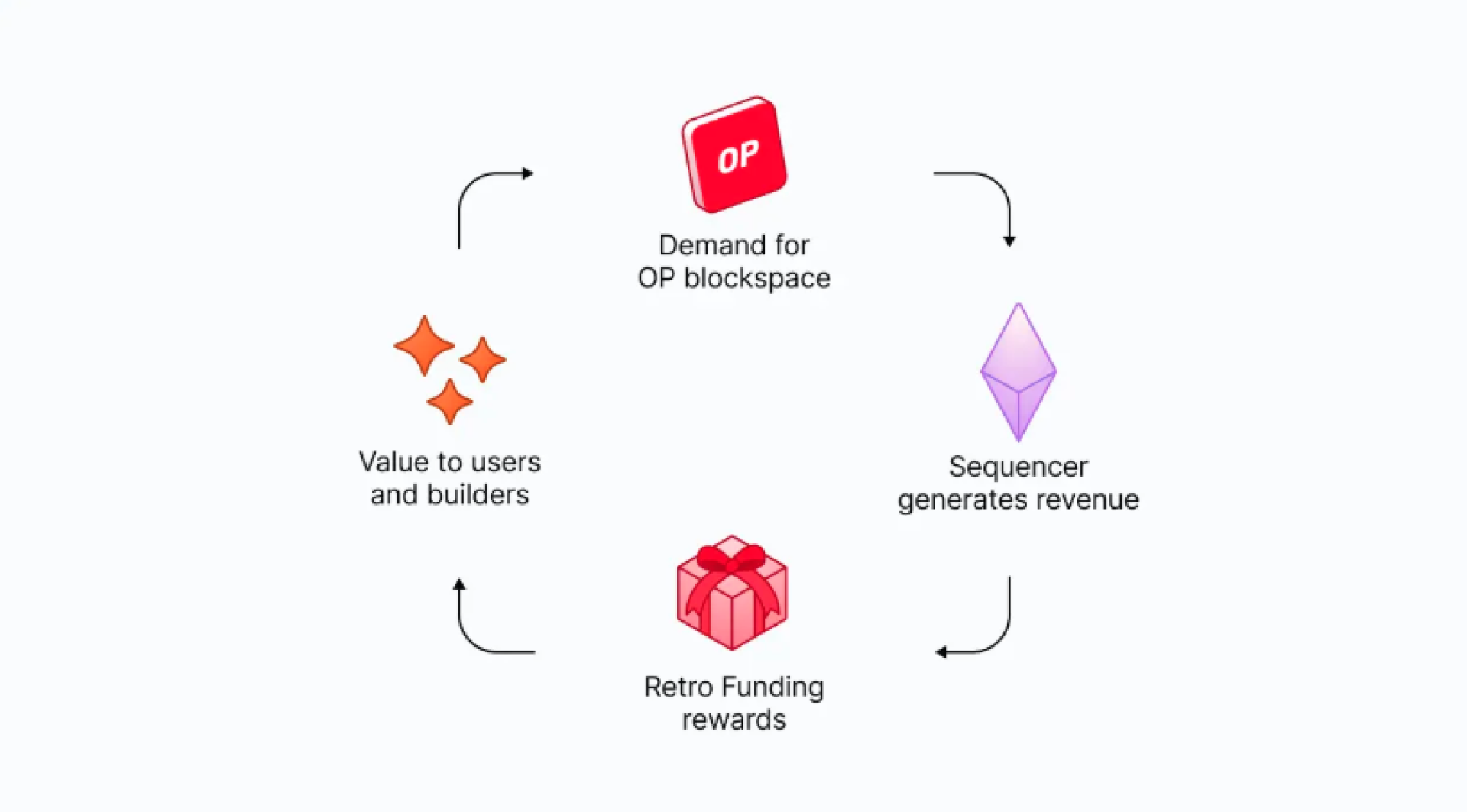
Pattern two: tribalism paired with loyalty
Loyalty doesn’t always replace tribalism. Sometimes, it’s simply built on top of it.
In such a case, the community retains its early tribal energy, but instead of burning out, learns to layer meaning and structure beneath it. The result is emotional intensity paired with identity.
How to recognize this shift?
- The community retains memes, contrast narratives, and internal slang.
- Participation is expressive, emotional — but increasingly reflective.
- People continue to signal belonging even without major news or price moves.
- The in-group favoritism is paired with the actual pride of the development of the project / ecosystem.
Why does it happen?
- Reinforced in-group favoritism that further strengthens cohesion and makes the group feel safer.
- Operant conditioning: social rewards (likes, attention, role upgrades) paired with actual developments make participation habit-forming and emotionally satisfying.
- Shared emotional memory (e.g., collective wins over something or “we survived this together”) creates bonding that’s harder to replicate elsewhere.
How to influence it?
- Create layered participation: short-term actions (raids, events) with long-term paths (governance, content, bounties).
- From time to time, redirect tribal energy toward shared purpose (“us for them” instead of “us vs. them”)
- Try to make people proud of the community they belong to (e.g., through a major technical development or social proof milestone) – instead of focusing on “being different.”
Examples:
- Milady – chaotic, tribal identity with high emotional bonding and complex cultural layering, including irony, exclusion, and long-term belonging.
- Dogecoin – from parody coin to enduring subculture – tribal, irreverent, yet persistently active across cycles.
- Solana – early tribalism framed against Ethereum (“speed over decentralization”), but now a strong standalone culture with rituals (Breakpoint, Solana Summer), memes, and builder loyalty. And occasional digs at Ethereum.
Pattern three: a broken shift
Tribalism might go wrong, too. Some communities never evolve. They begin with clannish momentum, but fail to translate it into shared meaning, structure, or identity. Once incentives run out or emotional intensity drops, the community collapses. Or empties out quietly.
How to recognize this shift?
- Community disappears post-airdrop or launch.
- Price action or founder updates are the only things holding attention.
- Rituals and memes feel forced or stop altogether. Meme-generator-based UGC can be the ultimate indicator here.
- People stop defending the project — or even referencing it.
Why does it happen?
- Relying on the mere exposure effect: people initially engage just because something is familiar or trending – but that wears off quickly when there’s no deeper meaning.
- Sunk cost fallacy: some stick around longer than they should simply because they’ve already invested time, money, or reputation. However, this creates inertia, not loyalty.
- Authority bias: early engagement is often centered around charismatic founders. Despite the “cult of personality” being one of the most common traps (for projects and leaders) in the crypto world. We’ve covered it extensively in our “2025 Predictions” report.
How to avoid it?
- Easier said than done in Web3, but: define internal purpose before (or alongside) financial mechanics.
- Always try to establish early symbols, rituals, and touchpoints that can evolve. Then, follow with building something meaningful and make the community a part of it.
- Transition leadership energy into cultural infrastructure – not personality worship.
Examples:
- Friend.tech – early viral tribalism collapsed due to lack of identity and a clear development direction.
- Bitcoin Ordinals – initial hype and the “new, but BTC-based NFTs” narrative attracted creators and collectors, but Ordinals lacked shared direction, emotional continuity, or structure beyond their novelty.
- 90% of airdrop-initiated ecosystems – where early intensity evaporated as soon as tokens were claimed.

How Web3 founders can reinforce tribalism (and whether they should)?
For Web3 founders, the tribal energy may turn out to be relatively easy to trigger. And very tempting to sustain. Especially since the “us vs. them” approach often places them at the forefront of the movement because tribe members need an influential leader to follow.
Tribalism also speaks to inner cabotine instincts. It can be extremely emotionally rewarding, as founders would receive constant feedback through praise, symbols, and public loyalty. It also boosts visibility and creates early defensive loyalty – so that once they slip up, the tribe is ready to automatically protect their worshipped figure.
However, is building the cult-oriented tribe indeed something we need as Web3 leaders?
Such an approach leads to multiple pitfalls:
- Questioning the project becomes taboo. Those who raise concerns are treated as traitors, not contributors.
- The founder becomes the product. The attention may stay high for some time, but the project itself quietly disappears.
- The tribe becomes a shield, while founders no longer feel accountable.
To avoid these traps, I’d propose applying a “Model of Social Identity Management” – that I adjusted for the Web3 purposes. It offers a way to shift from cult-centered movements to community-driven cultures — by turning symbolic leadership into shared ownership of what “us” really means.
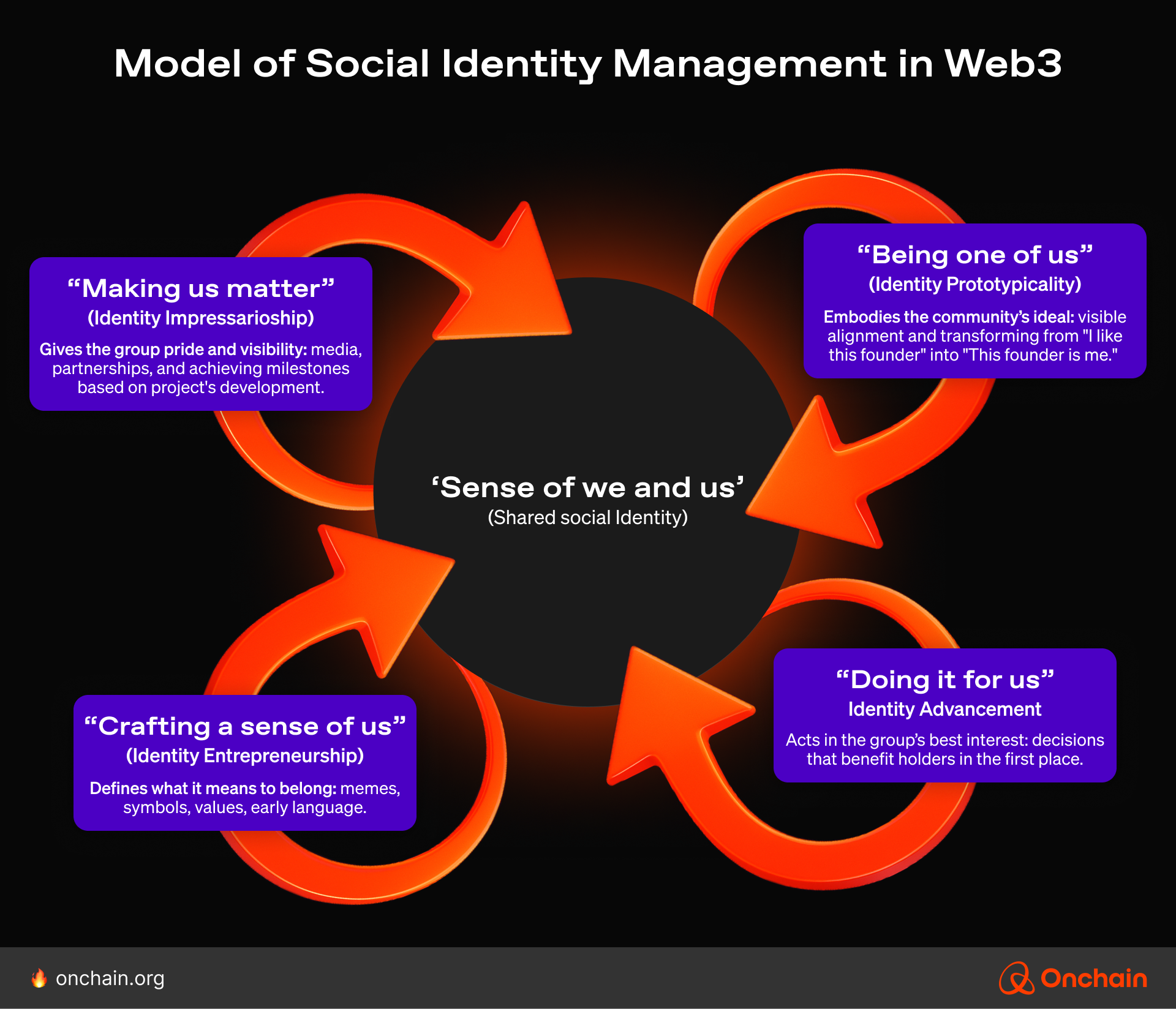
Let’s build tribal cultures, not tribal cults!
While tribalism or a cult-oriented culture is a fast way to ignite belief, loyalty is a slow way to earn trust. One generates energy. The other builds endurance.
Then, Web3 founders don’t need to reject tribal energy. But they should know when to let go of control, and let the culture stand on its own. And I hope that the paragraphs above helped you at least understand how to implement such a shift in practice.
I’ll be keeping my fingers crossed for you to time this change to perfection!
—
PS Big kudos to all the Team and Onchain Community members (MrGreenity, HERO, TUN, and Big Gids) for sharing your thoughts on the topic, and helping to shape the article!



